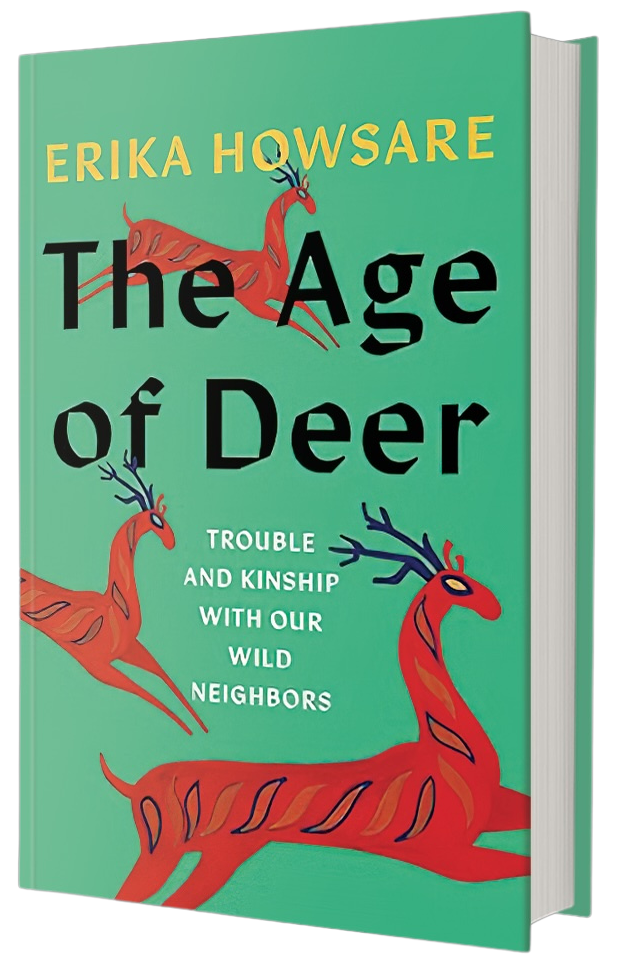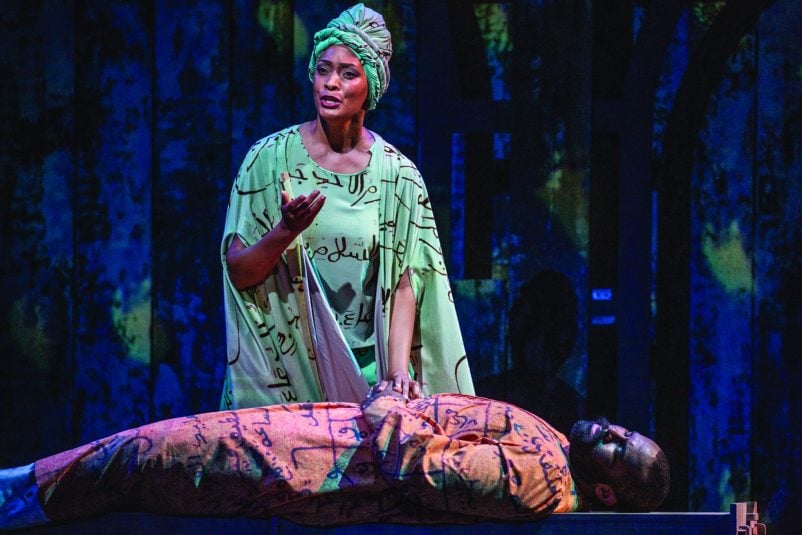The buck in question boasted an impossible 29 points, and his home range was a cemetery. He was often seen as a fearsome, otherworldly silhouette in the gloaming, his crown a forest unto itself. Navigating the misty maze of headstones, bending his heavy crown beneath the bony branches of the magnolias, they say he stepped lightly over the dead.
The buck’s killing in the late, wet days of 2023 was met with grief as thunderous as the deer’s crashing through winter forest. Outrage descended upon a boastful twenty-something who was brutal enough to kill the beast, and careless enough to post about his feat on social media. Charges are pending in Richmond, Virginia—not for the killing, but for where it occurred, beyond the pale of where the felling of fauna finds societal approbation.

Deer are among the most charismatic of the macrofauna that remain. Is it their blend of litheness and strength, their sharp, statuesque figure and delicate bones? Or their curious courage and fast flight response, their family structure and survivor history? Or how they carry in their upright ears and unflinching stares hints of both wildness and home?

Why we feel so deeply and act so strangely toward these twilight creatures is the subject of Erika Howsare’s consuming The Age of Deer. In this profound and courageous walkabout of a book, she traipses into a dense thicket of social and economic history, myth and imagination, culture and ecology. The result both pleases and demands.
To answer—or more accurately, to better ask the question—Howsare ventures through centuries, across cultures and geographies and peoples. We come along because we must. Howsare’s hospitable manner and magnetic subject draw us along, the doggedness of her research hidden beneath easy prose.

Like with a mystery novel, we learn without meaning to. That deerskin trade was a key industry in colonial America, responsible in part for the rapid growth of cities like Charleston and Augusta. That deer parks in Britain once numbered more than 3000, a showy phenomenon in a nobleman’s portfolio, enclosed by fences known as pales—thus gifting us a common “beyond the pale.” That our now-preservationist term “wilderness” derives from the Old English deor, as we seem to know wildness first from the deer that tell us we’ve entered it. That in Europe’s transportive cave galleries—Lascaux, Chauvet, and Altamira—deer are one of most oft-painted creatures. That in the United States, more than 30 states invested fortunes in moving white-tail deer with great care and precision from one region to another to ensure continuity of population.
So we could kill them, of course. The thread throughout Howsare’s exceptional investigation is that deer are not just twilight dwellers in a circadian sense, but liminal creatures in a metaphysical landscape, leaping across the gap from death to life and back again. Among the most common roles of deer across a diverse range of mythologies is that of psychopomp, an escort to the afterlife. Rituals abound: before we hunt, after we kill, when we eat, when we make of the animal remains tools and art.
In a particularly compelling sequence, Howsare participates in the full physical dismantling of this evolutionary marvel, learning how each of a deer’s component parts become of value in a human context. And yet the deer is not reduced: With each piece removed, the deer’s individual life is revealed—past traumas and scars, diet and habitat and range and lineage. Like rings on a tree, it is a narrative visible only after its felling. A life seen through the lens of death.
With each morsel, Howsare feeds us her fascination and regard, until—like in the ancient rituals she describes—we have become high with the consumption, and our vision of history and society is altered forever by the presence of a stag, a fawn, a doe.
Her fascination and regard is not limited to the deer, but extends to the humans that encounter these animals, as poets, protectors, or predators. Howsare is fully present, as both observer and participant, a host at her home in the foothills of the Blue Ridge, a visitor to territories and subcultures far afield from her own. Of the book’s many virtues, its most remarkable may be Howsare’s rare entrance into what she calls “a marriage of discomfort,” to gaze with empathy toward both hart and hound, to tiptoe on the line between the sentimental and the rationale, the elemental and sublime, to float like a leaping deer across fences.
Howsare’s work is a standout in an increasingly crowded category, the titles multiplying that attempt to approach our anxious, revelatory relationship with the wild. Such books, as devoted as they are to the creatures they center, are often proxies for another kind of contemplation. The animals guide us back to ourselves.
The Age of Deer is no exception to this rule, except in the quality of its execution. Within each chapter, Howsare demonstrates an extraordinary ability to hold in sustained conversation the human and wild. With deliberate, approachable framing, she asks again and again the question we confront restlessly in these troubled Anthropocene days: How can we return to an Earth we’ve so wounded? In her grounded, considerate manner, Howsare holds us as subject as much as the deer that carry the title, observing both with a tremendous depth of generosity, a feat nearly as impossible as putting a hand on a wild doe.
This review will appear in the Spring 2024 issue of Worth magazine as part of the article “Symphonies of Mastery.” Read Ashlock’s review of David Virelles’s Album ‘Carta’ here.








